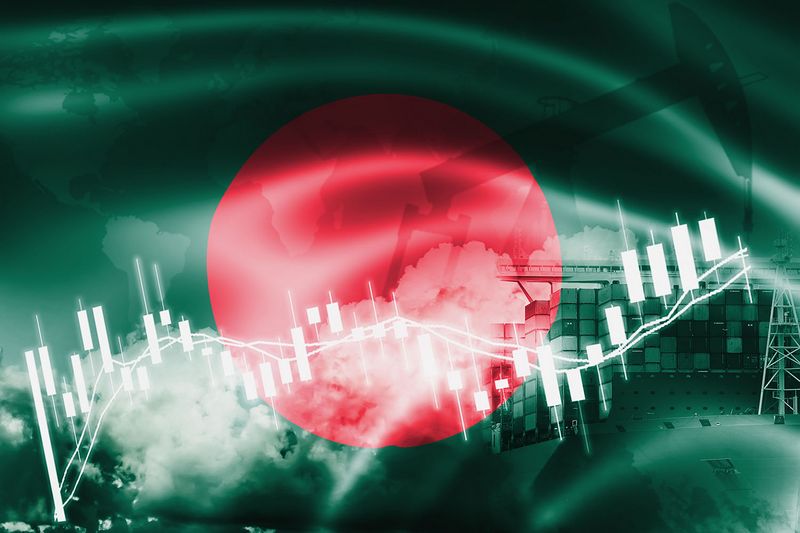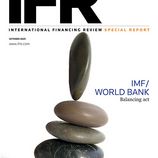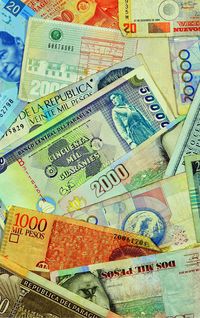Bangladesh is on track to have one of the world’s fastest growing economies this year despite the Covid-19 emergency but it must sort out a looming banking crisis.
Bangladesh's economy expanded by a whopping 5.24% for the year to June 30 – raising annual income per head to US$2,064 – according to provisional figures from the Bangladesh Bureau of Statistics. Standard Chartered forecasts that GDP will jump by 5.6% during the current fiscal year until June 30 2021, but the government is aiming for a V-shaped economic recovery and 8.2% growth.
The economy is faring a lot better than its regional peers. Moody’s is forecasting that India’s GDP will nosedive by 11.5% during the current fiscal year. Pakistan’s central bank predicts that country’s economy will drop by 0.4% this year, while the Asian Development Bank forecasts Indonesia’s economy will shrink by 1%. China is one of the few major Asian economies expected to expand, but only by 1.6%, according to the World Bank.
Furthermore, during the last decade, Bangladesh – with a US$348bn economy and 168 million inhabitants, according to the International Monetary Fund – recorded the highest economic expansion on The Spectator Index among a list of 26 nations globally. Between 2009 and 2019, its GDP surged by 188% at current prices, compared with its closest rivals Ethiopia at 180%, China at 177%, India at 117% and Indonesia at 90%.
As of September 13, Bangladesh had recorded 337,520 cases of Covid-19 and 4,733 deaths from the virus, according to the country’s Directorate General of Health Services.
“Bangladesh could well be one of the world’s best performing economies this year,” said Joydeep Datta Gupta, a board member of Deloitte Bangladesh.
“Covid-19 has undoubtedly had an impact on the economy but it is still expanding at a fast clip. The rebound of ready-made garments (RMG) production and exports, maintenance of inward non-resident Bangladeshi remittances, and revival of agricultural production back to pre-Covid-19 levels are signs of the country’s early recovery.
“The pandemic has led many multinational companies to rethink their supply chains, considering whether they have too much concentration risk in specific countries. This is creating a huge opportunity for Bangladesh as many foreign firms are considering opening plants there, particularly in the more than one hundred special economic zones the government is developing. While the RMG sector remains important for the country, the light engineering, agro-processing and pharmaceutical sectors are also becoming significant.”
The country’s economy is proving impressively resilient, but it does have one major issue on the horizon: banking sector vulnerabilities. At the end of June, banks on average had a non-performing loan ratio of 9.16% of total loans, according to the country’s central bank. The state-owned commercial banks had an NPL ratio of around 23% and accounted for about 45% of all the banking system’s overdue loans.
However, the distressed debt situation is likely to be far worse than the NPL ratio implies because of a high proportion of rescheduled and restructured advances that are not included in the NPLs.
“We are unlikely to see much of a pick-up in the official NPL ratio this year,” said Michael Puli, associate director of financial institutions ratings at S&P Global Ratings. “The problem lies with the delayed recognition of NPLs and the ease with which banks can restructure loans, which keep rising as a proportion of total advances. In fact, we estimate around one-third of the banking system’s balance sheet will be made up of distressed loans.
“Previously, the government has injected capital to shore up the system’s ‘weak banks’ but Covid-19 has constrained its finances and limits its inclination to inject further capital at the moment. The regulator’s forbearance essentially covers up the issue and undermines the country’s ability to leverage the banking system for economic growth.”
Since April 1, the government has tried to support the economy by slashing the interest cap that lenders can charge to 9% from 13% (apart from on credit cards). This has been welcomed by small and medium-sized enterprises that say one of the biggest constraints on their expansion plans has been the high cost of credit. However, there is a risk that banks will become more selective about the clients that they lend to.
One other challenge is the country’s mounting public debt-to-GDP ratio: 36% at the end of 2019, but increased borrowing during the pandemic could push it up to 41% soon, according to the IMF. However, it still compares favourably to India’s ratio, which Fitch Ratings expects to reach 84% next year. Bangladesh’s foreign exchange reserves also hit an all-time high of US$38.3bn in August this year.
ENTREPRENEURIAL SPIRIT
One of the reasons why the nation – which has been led by Prime Minister Sheikh Hasina since 2009 – has had such a fast growing economy during the past decade seems to be down to the strong entrepreneurial spirit that permeates all levels of society.
Bangladesh has become the world’s biggest market for composite liquefied petroleum gas cylinders since its government started to ration the domestic use of natural gas in 2017 and more than 1.4 million units have been sold in the country since that year.
“What I find most impressive about Bangladeshi entrepreneurs is their incredible ability to pivot and to reinvent themselves and their businesses depending on the circumstances,” said Mark Wakem, project director, global markets at Aburi Composites, a London-based supplier of composite LPG cylinders. “We experienced that this year when many companies in the RMG industry saw an opportunity and quickly switched to the manufacture of personal protective equipment.”
For example, Beximco, a Bangladeshi conglomerate heavily involved in garment manufacture, expects to export US$250m worth of protective gear this year, and around 60% of its 40,000 workers have been channelled into making PPE.
During the past two decades, low wages have helped Bangladesh build one of the world’s biggest RMG industries, with around 4,000 factories employing four million workers. Garment exports accounted for US$34.1bn, or 84%, of the country’s overall exports in the fiscal year through to June 2019.
However, at the height of the pandemic in the developed world, in April and May, international retailers and fashion brands cancelled RMG work orders in Bangladesh to the tune of US$3.18bn, putting local suppliers in a tight spot. The government provided a US$1.23bn stimulus package for export-orientated sectors, particularly the RMG industry, so that they could pay their workers’ wages from April to July.
The sector now seems to be leading the economic recovery in the country. In September, DBL Group, a leading garment exporter, said its factories were running at 75% capacity and that it expected they would reach 90%-95% by November or December this year.
“We appear to be witnessing the green shoots of economic recovery during the past two months,” said Naser Ezaz Bijoy, chief executive officer at Standard Chartered in Bangladesh.
“We are comfortable with our forecast of 5.6% economic growth, contingent on whether there are second waves of Covid-19 in Bangladesh or in the export destinations. Further lockdowns would adversely impact the demand and supply chain for exports. However, although Bangladesh is the world’s second largest apparels exporter, it accounts for only 6% of the global volumes, so there is still enough industry wallet-share for Bangladesh to retain, as long as the exporters remain resilient and are able to deliver as per their commitment.
“The issue of non-performing and restructured loans was there before Covid-19 came along. Regulators and stakeholders are fully aware of the risks associated with the problem. It is probably a problem that the country can live with for a few years but it is not sustainable in the long term, eventually it would catch up with the economy.”
Modern, large-group microfinance was invented in the country. In 1976, Professor Muhammad Yunus, a Bangladeshi social entrepreneur, decided to help the poor – in particular women – to access credit by founding the country’s first major microfinance institution (MFI), called Grameen Bank. Microcredit lifted 10 million Bangladeshis out of poverty between 1990 and 2008, according to a report by US-based Microcredit Summit Campaign. However, many poor people took loans from multiple MFIs and became overly indebted.
Bangladesh has four types of MFI: Grameen Bank; around 1,500 non-governmental organisations; commercial and specialised banks such as Bangladesh Krishi Bank and Rajshahi Krishi Unnayan Bank; and government-sponsored microfinance projects. The industry had 31 million clients and total loans amounted to the equivalent of US$12bn in 2016, according to the latest figures from the national Microcredit Regulatory Authority.
The country has made remarkable progress in reducing poverty during the past three decades. Based on the international poverty line of US$1.90 a day, its poverty rate plummeted from 44.2% of the population in 1991 to 14.8% in 2017, according to the World Bank. It achieved lower middle-income country status in 2015 and is expected to graduate from the United Nations’ list of Least Developed Countries in 2024.
Bangladesh has witnessed an ‘economic miracle’ during the past decade and millions of Bangladeshis have been lifted out of poverty. The country’s strong entrepreneurial culture means it will probably enjoy one of the world’s best economic performances this year but it must sort out its distressed debt problem sooner rather than later.
To see the digital version of this report, please click here
To purchase printed copies or a PDF of this report, please email gloria.balbastro@refinitiv.com




























